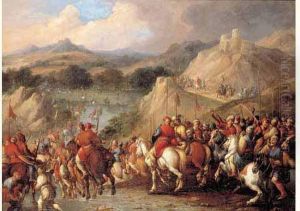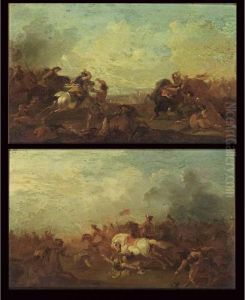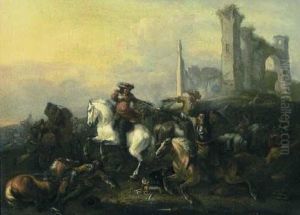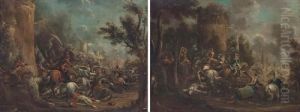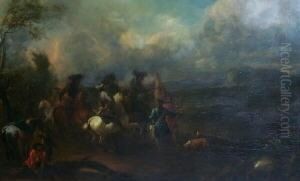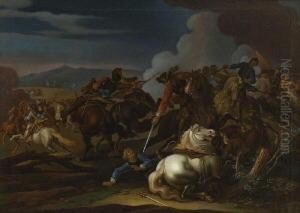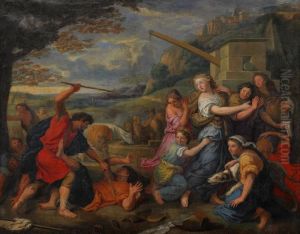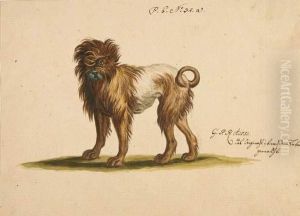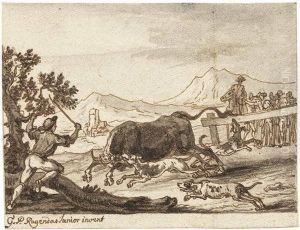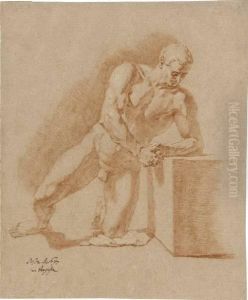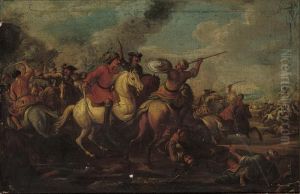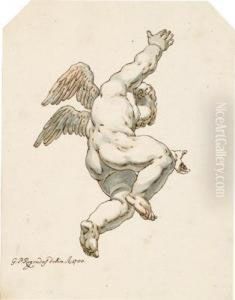Georg Philipp Rugendas I Paintings
Georg Philipp Rugendas I was a notable German painter and engraver born in Augsburg in 1666. He is often remembered for his significant contribution to the Rugendas family legacy of artists and his involvement in the European art scene of the late 17th and early 18th centuries. Coming from a lineage of artists, Georg Philipp was part of a dynasty that included several generations of painters and engravers, which played a crucial role in shaping his career and artistic development.
Rugendas I was trained by his father, Georg Rugendas the Elder, who was also a respected artist in his own right. After completing his apprenticeship, he further honed his skills by studying the works of other artists and possibly traveling to gather broader influences. His works often encompassed a variety of subjects, including historical scenes, portraits, and landscapes. He was particularly known for his battle scenes and horse-related subjects, which were highly regarded for their dynamic composition and attention to detail.
Throughout his career, Georg Philipp Rugendas I built a reputation for his engravings as well. His technical skill in this medium allowed him to produce works with fine gradations of tone and intricate details, which were well received by his contemporaries. His engravings not only served as standalone art pieces but also as illustrations for books, further disseminating his work across Europe.
Rugendas I's influence extended beyond his own creations. He was active as a mentor and teacher, thus contributing to the education of the next generation of artists. His legacy was carried on by his descendants, most notably by his grandson, Georg Philipp Rugendas II, and later by other family members, who continued to be active in the arts.
Georg Philipp Rugendas I passed away in 1742 in Augsburg. His body of work remains a testament to the Rugendas family's impact on the art world, and his engravings and paintings are still studied and admired for their artistic value and historical significance.






